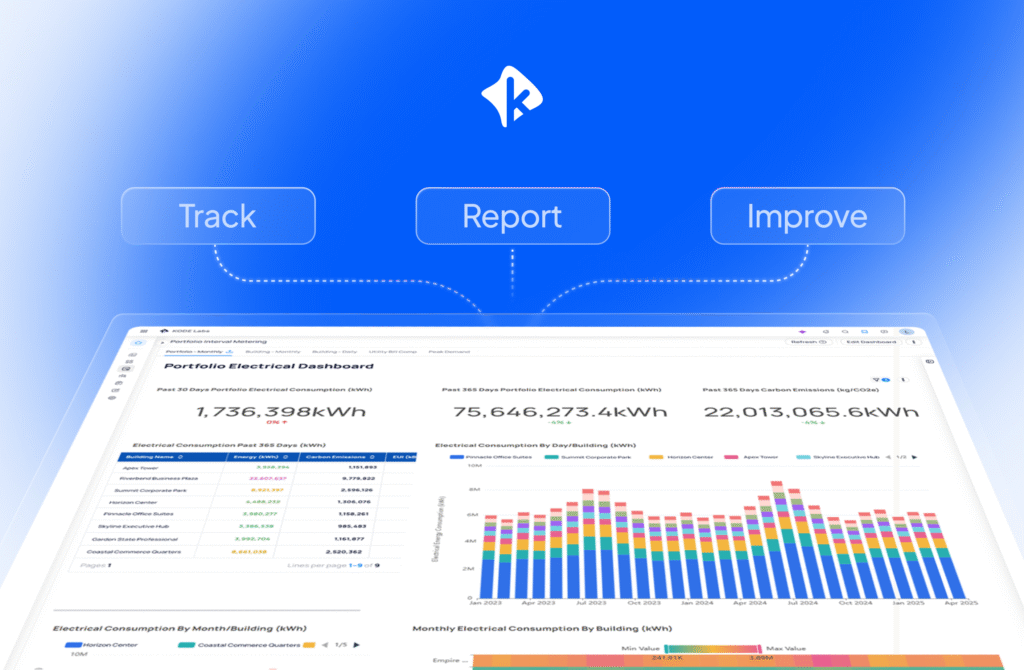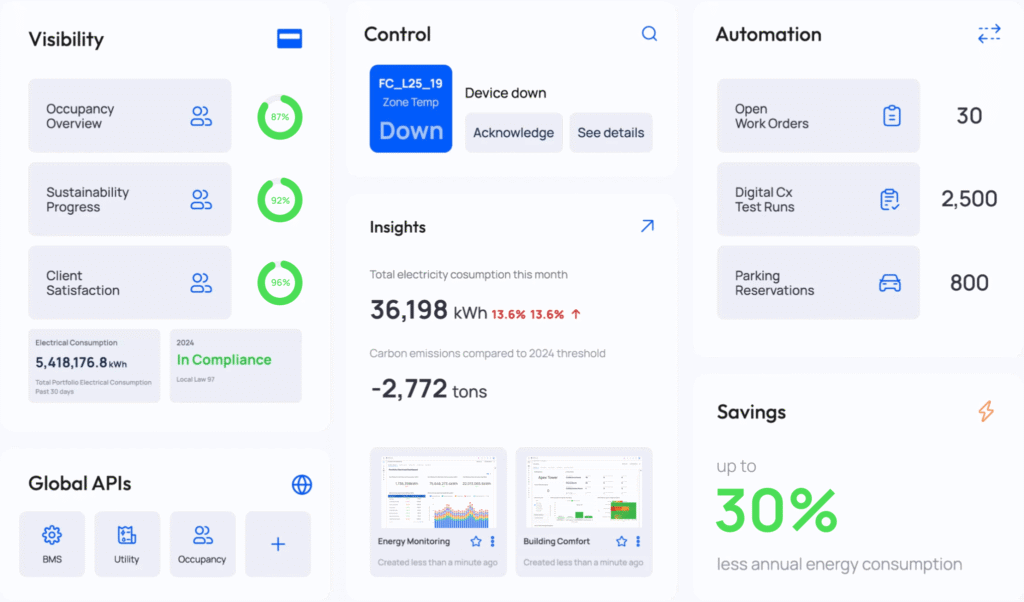By Ardit Fetahu
On this page
Sign up to our newsletter
Subscribe to receive the latest blog posts to your inbox every week.
By subscribing you agree to with our Privacy Policy.
What does the Fault Detection & Diagnostics (FDD) dashboard do?
Fault Detection & Diagnostics (FDD) redefines building maintenance with proactive optimization. It allows building operators to prevent issues before they occur, allocate labor more efficiently and prevent excess energy consumption due to faulty equipment. By bringing predictive intelligence to everyday operations, FDD ensures peak performance. Here’s what it offers:
- Unified event overview: All active faults and alarms are grouped up in one place, with clear visual highlights for affected areas and high-priority events.
- Root cause insights: Provides details on fault frequency, duration, and impact to uncover the underlying patterns behind recurring problems, enabling proactive fixes rather than reactive troubleshooting.
- Incident grouping: Transforms alarm noise into actionable insights by consolidating related alarms into grouped incidents, ensuring operators address root cause instead of getting overwhelmed by redundant notifications.
How can I use it?
Fault Detection & Diagnostics (FDD) empowers maintenance teams to:
- Proactively manage building systems: Identify and address potential issues before they escalate, preventing downtime and costly repairs.
- Optimize maintenance resources: Pinpoint problem areas and allocate labor more effectively to high-priority tasks.
- Improve operational efficiency: Group alarms into incidents and reduce clutter, helping teams stay focused on what matters most.
Streamline fault management
Managing building faults can be overwhelming, especially when alarms flood in from multiple systems, creating noise that obscures actionable insights.
FDD streamlines this process by centralizing all alarms into one intuitive dashboard. Building Operators can focus on the most critical issues, with high-priority faults clearly highlighted. For example, instead of responding to over 100 separate alarms caused by a single underlying issue, operators only need to address 4 grouped incidents, saving time and improving response accuracy.
This streamlined approach ensures that maintenance teams spend less time sorting through notifications and more time fixing problems that matter.

Actionable insights on fault trends
FDD goes beyond fault detection by providing advanced analytics to identify trends and prevent future issues. Key insights include:
- Fault frequency and severity: Understand how often and how seriously specific faults occur, prioritizing fixes for the most disruptive issues.
- Duration and impact: Analyze how long faults persist and their effect on building performance, helping operators address long-term inefficiencies.
- Domain-specific patterns: Pinpoint recurring issues in specific systems like HVAC, lighting, metering, etc., enabling targeted solutions.
These insights allow operators to transition from reactive troubleshooting to proactive maintenance, ultimately saving time, reducing costs, and improving system reliability.

Boosting efficiency with grouped incidents
One of FDD’s most powerful features is its ability to group related alarms into a single incident. Instead of addressing each alarm individually, operators can tackle the root cause behind grouped incidents, ensuring faster resolution and fewer recurring problems.
For my customers, this feature has been transformative. By reducing the number of alarms requiring attention, FDD enhances response time, reduces system downtime, and ensures buildings operate at peak efficiency.


FDD redefines building operations by turning reactive maintenance into proactive optimization. With centralized insights, predictive intelligence, and smarter workflows, it empowers operators to maintain peak performance while saving time and resources. From my experience, I believe that FDD is a cornerstone of modern building management, driving efficiency, sustainability, and long-term value.
If you want to learn more about how Fault Detection Diagnostics can impact your building management operations, let’s connect on LinkedIn or book a demo with our team.



